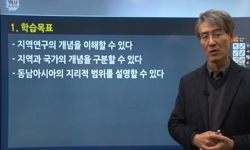<P><B>Abstract</B></P> <P>Three generations of calc–alkaline lamprophyre, occurring as patches or segregations in granite and as dyke swarms with a NNW–SSE trend, are associated with the Late Jurassic Shanqi&...
http://chineseinput.net/에서 pinyin(병음)방식으로 중국어를 변환할 수 있습니다.
변환된 중국어를 복사하여 사용하시면 됩니다.
- 中文 을 입력하시려면 zhongwen을 입력하시고 space를누르시면됩니다.
- 北京 을 입력하시려면 beijing을 입력하시고 space를 누르시면 됩니다.



Late-stage hydrothermal alteration and heteromorphism of calc–alkaline lamprophyre dykes in Late Jurassic Granite, Southeast China
한글로보기https://www.riss.kr/link?id=A107595955
- 저자
- 발행기관
- 학술지명
- 권호사항
-
발행연도
2009
-
작성언어
-
- 주제어
-
등재정보
SCI,SCIE,SCOPUS
-
자료형태
학술저널
-
수록면
820-830(11쪽)
- 제공처
- 소장기관
-
0
상세조회 -
0
다운로드
부가정보
다국어 초록 (Multilingual Abstract)
<P><B>Abstract</B></P> <P>Three generations of calc–alkaline lamprophyre, occurring as patches or segregations in granite and as dyke swarms with a NNW–SSE trend, are associated with the Late Jurassic Shanqi–Xiaqi granite, SE China. They comprise coarse-grained, hornblende-dominated spessartite and two types of panidiomorphic kersantite: type-1 contains clinopyroxene and biotite phenocrysts, whereas type-2 is fine-grained and plagioclase-rich. The granite is characterised by large feldspar crystals and Al-rich annite. This rare occurrence of outcrops with no influence from atmospheric weathering allows the investigation of extensive alteration from hydrothermal interaction between lamprophyres and granite. At a depth of ca. 18 km, the breakdown of annite in the granite to magnetite+K-feldspar was the result of reheating above 670 °C at oxygen activities >10<SUP>−17</SUP> bar. In the lamprophyres, a variety of reactions due to autometasomatism include: breakdown of Ti-rich pargasites to chlorite, epidote, titanite; olivine to talc, tremolite, saponite, beidellite and Fe–Cr spinels; biotite to chlorite and titanite; calcic plagioclase to orthoclase, albite, epidote, chlorite and beidellite. Late-stage magmatic hydrothermal fluids from granite and lamprophyres resulted in redistribution of F, Ba, Sr, and CO<SUB>2</SUB> with the formation of calcite–fluorite veins. Amphibole-rich spessartite and biotite–diopside dominated kersantite exhibit heteromorphism in that they have similar geochemical characteristics but different mineralogies. The alkali-rich lamprophyric magmas are inferred to have been derived from melting in the mantle wedge during the subduction of the Kula Plate, and show typical backarc rift chemistry. Prior to intrusion of lamprophyre, underplating of large volumes of basaltic magma is thought to have enhanced partial melting in the overlying continental crust resulting in widespread granite magmatism in SE China.</P>




 ScienceON
ScienceON



